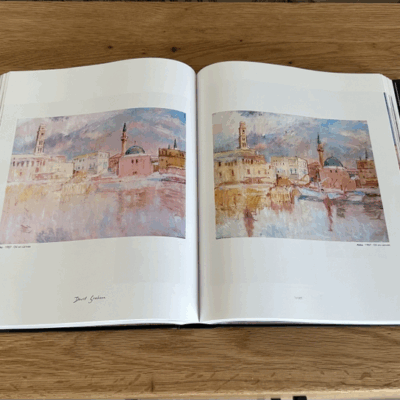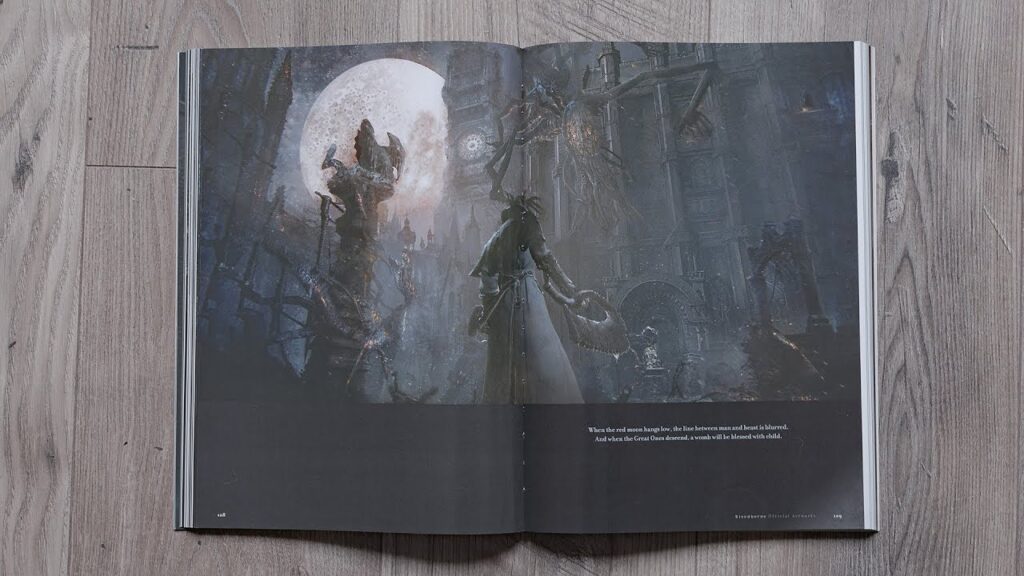Discover the Crucial Guide to Art Book Printing for Aspiring Artists and Publishers
As a hopeful musician or publisher, understanding the subtleties of art book printing is necessary to bringing your vision to life. You'll require to consider different elements, from choosing the appropriate sort of book to making certain shade accuracy and selecting ideal materials. Each choice affects the end product greatly. So, what are the crucial elements you should concentrate on to create a magnificent art book that absolutely represents your work?
Recognizing Different Kinds Of Art Books
When you plunge right into the world of art publications, you'll promptly uncover that they can be found in different kinds, each tailored to various artistic expressions and target markets. Coffee table books often display stunning visuals, excellent for casual browsing, while essays dive deep into a private artist's work, giving context and understandings. If you want certain art movements, exhibition brochures provide thorough documents of programs, featuring essays and critiques.
For instructional purposes, art guidebooks and strategy books guide you with different mediums and styles, making them crucial for aiming artists. Each layout offers its objective, and understanding their differences can enhance your art book trip.
Choosing the Right Paper and Products
Selecting the best paper and materials can significantly influence the overall top quality and feel of your art book. Beginning by taking into consideration the type of art work you have. For lively shades and intricate information, select a shiny surface or a heavyweight matte paper that enhances aesthetic deepness. If your work includes softer tones or textures, a natural or uncoated paper can provide a warm, inviting touch.
Believe concerning the weight of the paper, too. Thicker alternatives usually offer an even more expert appearance, while lighter papers can minimize printing prices. Don't forget the binding products; a sturdy cover can protect your web pages and add to the book's visual.
Ultimately, take into consideration sustainability. Environment-friendly alternatives are obtaining popularity and can mirror your values as an artist. By very carefully selecting your paper and materials, you'll assure that your art book not only looks wonderful yet likewise feels unique in the hands of your viewers.

Choosing the most effective Printing Methods
When it comes to publishing your art book, picking in between countered and electronic printing can greatly influence your final product. You'll also wish to think about how paper high quality impacts the general appearance and feeling of your art work. Let's explore these crucial printing strategies to discover the very best fit for your job.
Balanced Out vs. Digital Printing
While both balanced out and electronic printing have their benefits, picking the appropriate technique for your art book can considerably influence the end product. Countered printing uses high-grade images and dynamic shades, making it excellent for larger print runs. If you're seeking to produce hundreds or countless copies, balance out will certainly offer you constant outcomes and reduced per-unit prices. On the other hand, electronic printing excels for smaller amounts and quicker turnaround times. It allows for very easy customization, allowing you to publish unique copies without additional setup prices. Consider your spending plan, timeline, and the volume of your job. Ultimately, your option must straighten with your imaginative vision and circulation technique, ensuring that your art book mirrors the quality you desire.
Paper Top Quality Considerations
Picking the right paper quality can considerably improve the visual charm and responsive experience of your art book. For prints, a glossy surface can make images pop, while a matte coating offers a softer, a lot more refined appearance.
Following, think of the sustainability of your choice. Green choices are coming to be progressively preferred and can interest environmentally-conscious viewers. Demand examples to see just how various papers work with your artwork, ensuring the last item shows your vision perfectly.
Making Certain Shade Precision in Your Prints
To attain magnificent prints, you need to concentrate on shade accuracy from the beginning. You'll intend to utilize shade calibration strategies to validate your display and printer remain in sync. Furthermore, proofing your job prior to the last print run can aid capture any discrepancies, assuring your art looks equally as you pictured.
Shade Calibration Methods
Guaranteeing color accuracy in your prints starts with reliable shade calibration methods that help maintain uniformity between your digital photos and final published items. First, calibrate your screen using equipment calibration devices to attain the best color representation. This verifies that what you see on-screen matches what obtains published. Next off, select a color profile matched for your printing process, like CMYK for print materials. Routinely inspect your printer's settings and keep it to prevent color changes. It's additionally necessary to make use of premium paper that matches your inks, as different surface areas can significantly impact color result. By constantly using these techniques, you'll boost the overall high quality of your art prints and better communicate your artistic vision.
Proofing for Accuracy
While you might believe your digital images are ready for print, proofing is important for accomplishing shade precision. Prior to committing to a full print run, constantly request an evidence from your printer.
If modifications are needed, connect plainly with your printer about your wanted outcomes. Do not wait to request several evidence if needed; it's worth the financial investment to get it right. Ultimately, comprehensive proofing assurances that your art work is stood for as you visualized it, preserving your imaginative integrity throughout the printing procedure.

Creating Layouts That Enhance Your Artwork
When you create formats for your art book, it's vital to ponder just how each aspect connects with your art work. Go for a you could check here balance in between visuals and message, guaranteeing neither outweighes the various other. Usage white area purposefully; it offers your art work space to breathe and accentuates its details.
Consider the circulation of your book. Arrange images in such a way that overviews the reader's eye, developing a story or thematic progression. art book. Differ the dimensions and orientations of your artwork to maintain the format dynamic and fascinating
Select font styles that complement your artwork without distracting from it. Maintain message concise and relevant, giving context or understanding that boosts the audience's experience.
Finally, examination various formats. Print examples to see exactly how the styles equate theoretically, and change as needed. By thoughtfully designing your designs, you'll create an aesthetically engaging art book that reverberates with your audience.
Binding Choices for a Specialist End Up
Selecting the right binding choice can greatly impact the general presentation of your art book. You'll intend to think about both aesthetic appeals and toughness when making your selection. Popular choices consist of perfect binding, which offers a sleek look and is best for thicker books; saddle sewing, suitable for smaller sized booklets; and spiral binding, which permits pages to lay flat for simple viewing.
If you're going for a costs feeling, instance binding is an outstanding selection, supplying a durable cover and a specialist appearance (art book). Don't fail to remember about the cover material; alternatives like fabric, leather, or a shiny surface can raise your book's charm
Whatever choice you pick, make sure it matches your art work and enhances the visitor's experience. Take your time to evaluate the benefits and drawbacks of each approach, so your end product mirrors the top quality of your creative vision.
Preparing Your Data for Print Preparedness
To ensure your art book is print-ready, you'll require to pay close focus to file preparation. Beginning by setting your file size to match your wanted print dimensions.
Additionally, install your font styles or convert text to details to prevent any type of font style problems. Conserve your work in a PDF layout, as this is one of the most approved file type for printers. Verify your apply for any typos or layout errors, as changes can be expensive after the reality. Ultimately, take into consideration creating an evidence to evaluate prior to the last print run. Complying top article with these actions will help you accomplish a polished, expert art book.
Frequently Asked Inquiries
What Is the Typical Price of Publishing an Art Book?
The average expense of publishing an art book differs, however you can expect to pay anywhere from $5 to $20 per duplicate, depending on factors like dimension, paper top quality, and printing volume.
How Can I Find a Reliable Printing Business?
To locate a trustworthy printing company, begin by investigating on the internet testimonials and look at this site asking fellow musicians for recommendations. Contrast quotes, check profiles, and connect your requirements plainly to ensure they recognize your vision and high quality expectations.
What Is the Normal Turnaround Time for Printing?
The normal turn-around time for printing differs but usually varies from one to four weeks. Factors like task intricacy and volume can affect this. Always validate with your selected printer for certain timelines and expectations.
Can I Print My Art Book in Limited Quantities?
Yes, you can definitely publish your art book in limited quantities. Many printing firms provide short-run alternatives, enabling you to create simply the number you need, making it easier to take care of prices and stock.
What Legal Factors To Consider Should I Know for My Art Book?
You should consider copyright, licensing arrangements, and version releases when producing your art book. Make sure you have the right to use all pictures and text, shielding yourself from possible legal problems down the road.